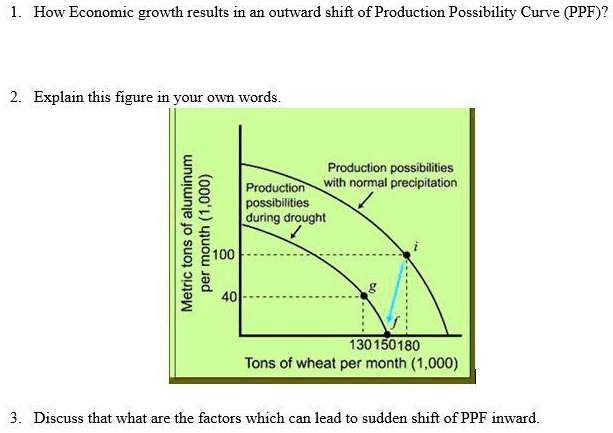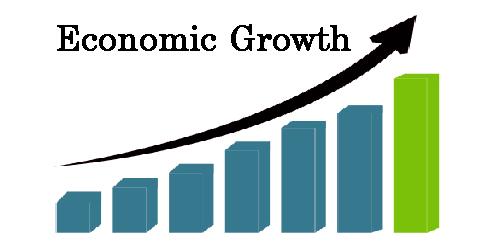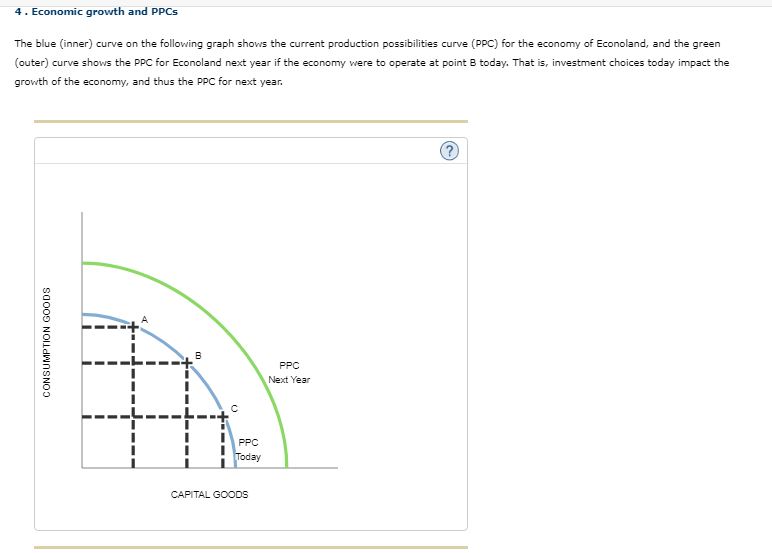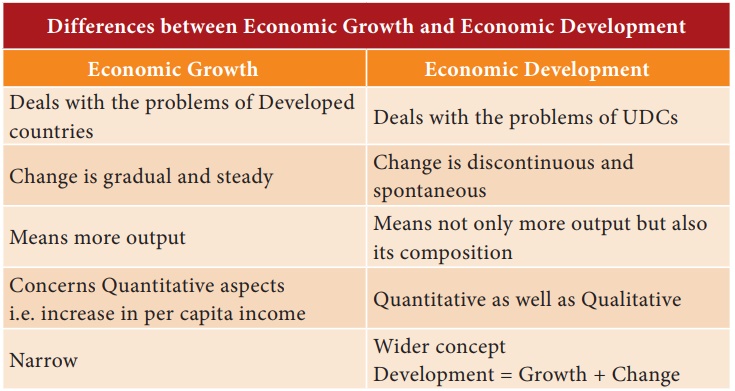Economic Growth Is The Result Of Which Of The Following

Imagine a bustling marketplace, overflowing with vibrant colors, the scent of freshly baked bread mingling with exotic spices, and the lively chatter of merchants and customers. This isn't just a picturesque scene; it's a microcosm of a thriving economy, constantly evolving and adapting. But what fuels this growth, this dynamic energy that propels societies forward?
At its core, economic growth isn't about any single magic ingredient but rather a complex interplay of factors, including innovation, investment, human capital, and effective governance. These elements, when harmonized, create a fertile ground for prosperity and improved living standards.
The Foundation: Productivity and Innovation
Economic growth, at its most basic, is about increasing the amount of goods and services a country can produce. This boils down to productivity: getting more output from the same input.
Innovation, the lifeblood of productivity gains, introduces new technologies, processes, and products that dramatically increase efficiency.
Think of the steam engine, the assembly line, or the internet – each a revolutionary leap that transformed industries and redefined what's possible.
The Role of Technological Advancement
Technological advancement is arguably the single most significant driver of long-term economic growth. It’s not just about shiny new gadgets; it's about fundamentally changing how we do things.
From agriculture to manufacturing to services, technology has consistently unlocked new levels of productivity and efficiency.
According to a study by the National Bureau of Economic Research (NBER), technological progress accounts for a substantial portion of the overall growth in developed economies.
The Importance of Research and Development (R&D)
Fueling technological advancement requires a commitment to research and development (R&D).
Governments and private companies alike must invest in exploring new frontiers, pushing the boundaries of knowledge, and translating discoveries into practical applications.
Countries with higher R&D spending tend to experience faster economic growth, demonstrating the direct correlation between innovation and prosperity.
Investing in the Future: Capital Accumulation
Innovation alone isn't enough; it needs to be paired with investment. This involves acquiring the tools, equipment, and infrastructure necessary to put new ideas into practice.
Capital accumulation, the increase in the stock of capital goods, allows businesses to expand, improve their operations, and create more jobs.
This includes investments in tangible assets like factories and machinery, as well as intangible assets like software and intellectual property.
The Significance of Infrastructure
A robust and well-maintained infrastructure is essential for supporting economic activity. This includes transportation networks (roads, railways, ports), energy grids, communication systems, and water and sanitation facilities.
Poor infrastructure can significantly hinder economic growth by increasing transportation costs, disrupting supply chains, and limiting access to markets.
Investing in infrastructure not only creates jobs in the short term but also lays the foundation for long-term prosperity.
Foreign Direct Investment (FDI)
Foreign direct investment (FDI) plays a crucial role in transferring technology, knowledge, and capital to developing economies. It allows countries to access new markets, improve their competitiveness, and accelerate their economic growth.
However, it's important to note that the benefits of FDI are maximized when accompanied by sound domestic policies and a conducive investment climate.
The Human Element: Human Capital Development
While technology and capital are important, they are ultimately tools wielded by people. Human capital, the knowledge, skills, and abilities of the workforce, is a critical determinant of economic success.
Investing in education, healthcare, and training programs is essential for creating a skilled and productive workforce capable of adapting to changing economic conditions.
A healthy and well-educated population is not only more productive but also more innovative and entrepreneurial.
Education and Training
Education is the cornerstone of human capital development. It equips individuals with the fundamental knowledge and skills necessary to participate in the modern economy.
Furthermore, training programs that provide workers with specialized skills are essential for bridging the gap between education and employment.
Governments and businesses must collaborate to ensure that training programs are aligned with the needs of the labor market.
Healthcare and Well-being
Healthcare is another vital component of human capital development. A healthy workforce is a more productive workforce.
Investing in preventative care, access to medical services, and public health initiatives can significantly improve the health and well-being of the population, leading to increased productivity and economic growth.
The Guiding Hand: Governance and Institutions
Finally, economic growth requires a supportive institutional framework. This includes strong property rights, rule of law, stable macroeconomic policies, and efficient regulatory environment.
These institutions provide the stability and predictability necessary for businesses to invest, innovate, and create jobs. Corruption, political instability, and weak governance can significantly hinder economic growth.
Daron Acemoglu and James Robinson, in their book Why Nations Fail, argue that inclusive political and economic institutions are essential for long-term prosperity.
Property Rights and Rule of Law
Secure property rights and a fair and impartial rule of law are essential for creating a level playing field and encouraging investment. When individuals and businesses are confident that their property rights will be protected, they are more likely to invest in productive activities.
Corruption and arbitrary enforcement of laws can undermine confidence and stifle economic growth.
Macroeconomic Stability
Stable macroeconomic policies, including low inflation, sound fiscal management, and a predictable exchange rate, are crucial for creating a favorable business environment. High inflation, excessive government debt, and volatile exchange rates can create uncertainty and discourage investment.
Economic growth is a dynamic process influenced by a multitude of interwoven factors. It's a symphony of innovation, investment, human capital, and effective governance working in concert.
While technological advancements often take center stage, the importance of human capital and a supportive institutional framework cannot be overstated. By fostering innovation, investing in our people, and building strong institutions, we can create a future where prosperity is within reach for all.
Ultimately, the marketplace, that vibrant hub of activity, represents the potential for growth that exists within every society. It is up to us to cultivate the conditions that allow it to flourish, creating a brighter future for generations to come.

![Economic Growth Is The Result Of Which Of The Following [ANSWERED] Economic growth Mec Serv Education Which of the following](https://media.kunduz.com/media/sug-question-candidate/20230907200401999004-5829358.jpg?h=512)



:max_bytes(150000):strip_icc()/dotdash_Final_Economic_Growth_2020-01-a0ace0fdcf3142ae94494dcfd9986daa.jpg)







:max_bytes(150000):strip_icc()/Economic-Growth-FINAL-56d44a93534b46dab5793b2fec7b965e.jpg)




